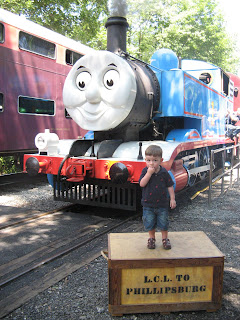
According to a new study by Professor Shauna Wilton at the University of Alberta, Augustana, female characters are few and far between and the few female trains on the Island of Sodor are marginalized.
Wilton analyzed 23 episodes of “Thomas and Friends” and found only 8 female characters, compared to 41 males.
"The female characters do tend to be a bit sidelined," Wilton says. "The show comes out of a particularly historical time period when society was hierarchical and there was a blind following of authority. I want my daughter to think for herself."
The global Thomas brand of books, video games, movies and a TV series had its beginnings in 1943, when the Rev. Wilbert Awdry in Birmingham, England, started making up stories for his son, Christopher. His 26-book series recreated his boyhood fantasies of talking steam engines outside his home village of Box in Wiltshire.
Wilton concedes Thomas does include some valuable but messages but those messages include a "conservative political ideology that punishes individual initiative, opposes critique and change, and relegates females to supportive roles."
Only Emily, the first female steam engine, is part of the core "steam team," and she didn't arrive in the TV series until the seventh season.
Indeed, descriptions of those characters range from the coaches Annie and Clarabelle, who are old and faithful, to Emily, who is bossy and difficult to work with, to Mavis, an unreliable, feisty young diesel engine that had a lot to learn.
Daisy, the snobbish and highly strung diesel railcar, has been discontinued, and Henrietta, the faceless passenger coach, was nearly turned into a henhouse by the station master. The peripheral Rosie idolizes Thomas and mimics him. And like Rosie, Lady is smaller than the rest of the engines, particularly in comparison to burly Gordon.

I contacted Professor Wilton to ask for the entire study which I received and read. I've broken down her complaints about the show into three categories.
1) The male-female dynamic. Wilton has a point here. The show’s characters are mainly males and the few females in the cast are smaller physically or dependent on the males, as is the case for Annie and Clarabel. But that doesn’t mean something nefarious is going on here. I think it’s ok for kid’s show to have a majority of male characters, or more female characters but if her point is that not only are there fewer females, but they’re also marginalized, I can see that.
2) The show breeds a fear of authority. Wilton claims the show’s reverence for Sir Topham Hatt, the conductor of the railroad, discourages children from challenging authority. Once again she has the right information but draws the wrong conclusion. Sir Topham Hatt runs the railroad on the Island of Sodor, the engines should listen to him and take his word as law. I think, and I’m sure most parents and teachers would agree, respect for authority is an important lesson to teach kids. And if they need to learn to challenge those sacred figures it would probably be pretty easy to pick that up later in life.

3) The class system. Once again, Wilton’s analysis is absolutely right: there is class warfare between Thomas and the other steam engines (“steamies”) and the Diesel engines. But once again this doesn’t teach kids to be racists, it causes conflict which any TV show or story needs, and in the end is usually resolved with everyone working together and realizing each other’s usefulness.
In short Thomas may be a sexist pig who teaches children not to question and authority and to reject anyone different than them, but we already spent too much money on these damn toys to take them away now.

2 comments:
For some reason I loved this post.
Maybe because it's thoughtful and well-researched as opposed to most of the crap I write?
Post a Comment